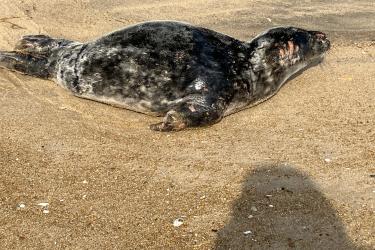Moving the nation toward renewable energy and away from fossil fuels is a big priority for the Biden administration in its effort to address climate change. And a key piece of the strategy to get there is generating more offshore wind energy.
Passive acoustics—or underwater listening technology—is a useful tool for monitoring marine mammals. It's also increasingly important as offshore wind energy development progresses along the East Coast.
In our new episode, we'll hear from Sofie Van Parijs, passive acoustics lead at the Northeast Fisheries Science Center. She talks about a study that used passive acoustics to record the sounds in the ocean off of southern New England, which is a vibrant and diverse area for whales and other marine mammals. Scientists monitored ambient sounds, fish and marine mammal activity, vessel occurrences, and other noises around offshore wind turbines. This data, along with other tools and technologies, will help us prepare for and mitigate the impacts of offshore wind developments.
Our experts also address some of the misinformation about offshore wind development and its potential impact on whales and other marine mammals.



